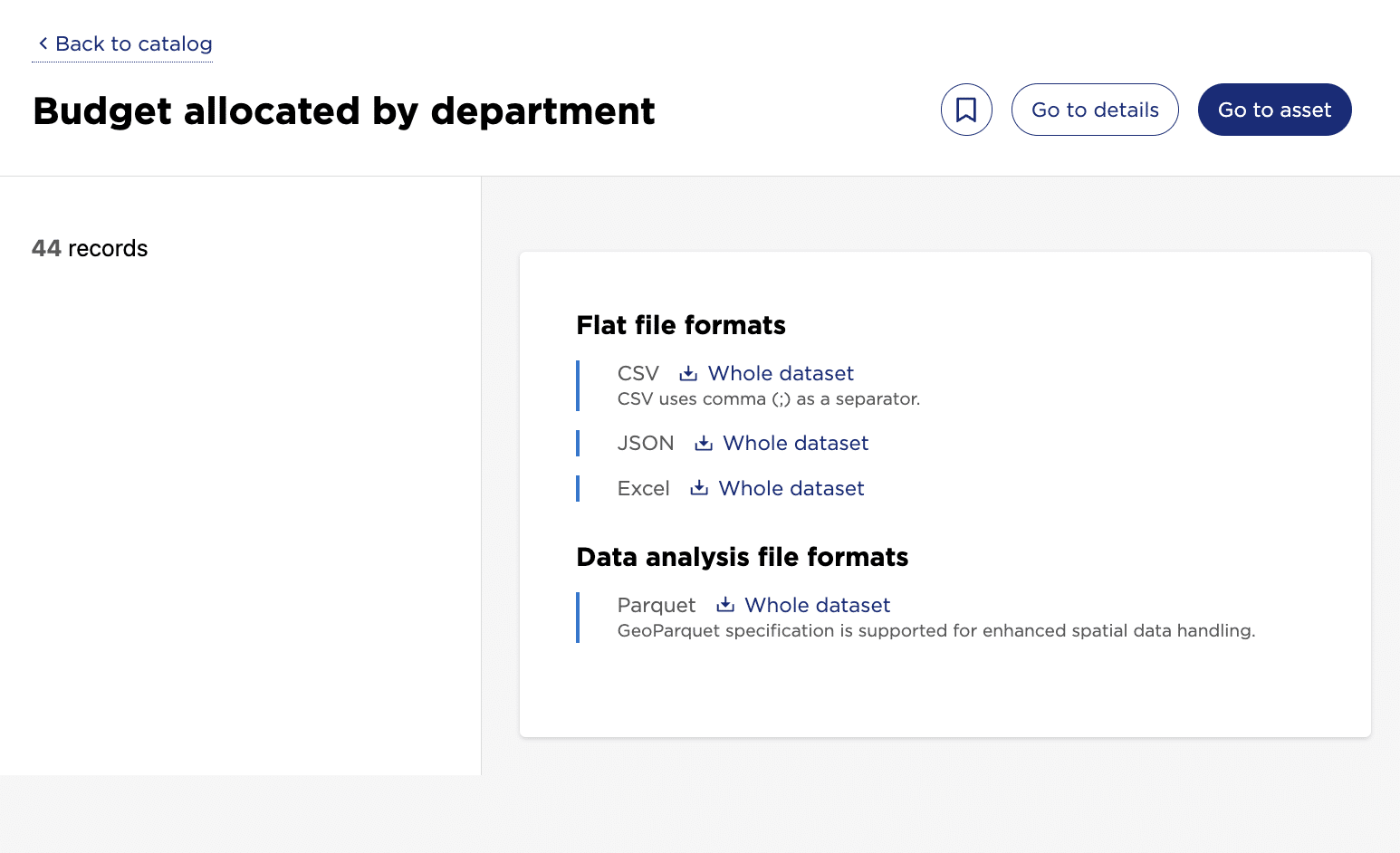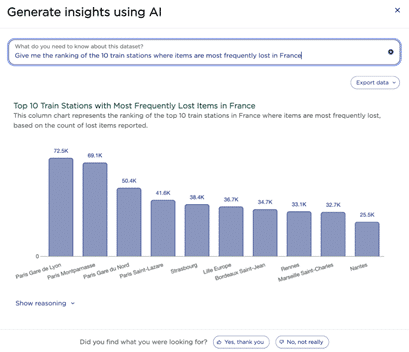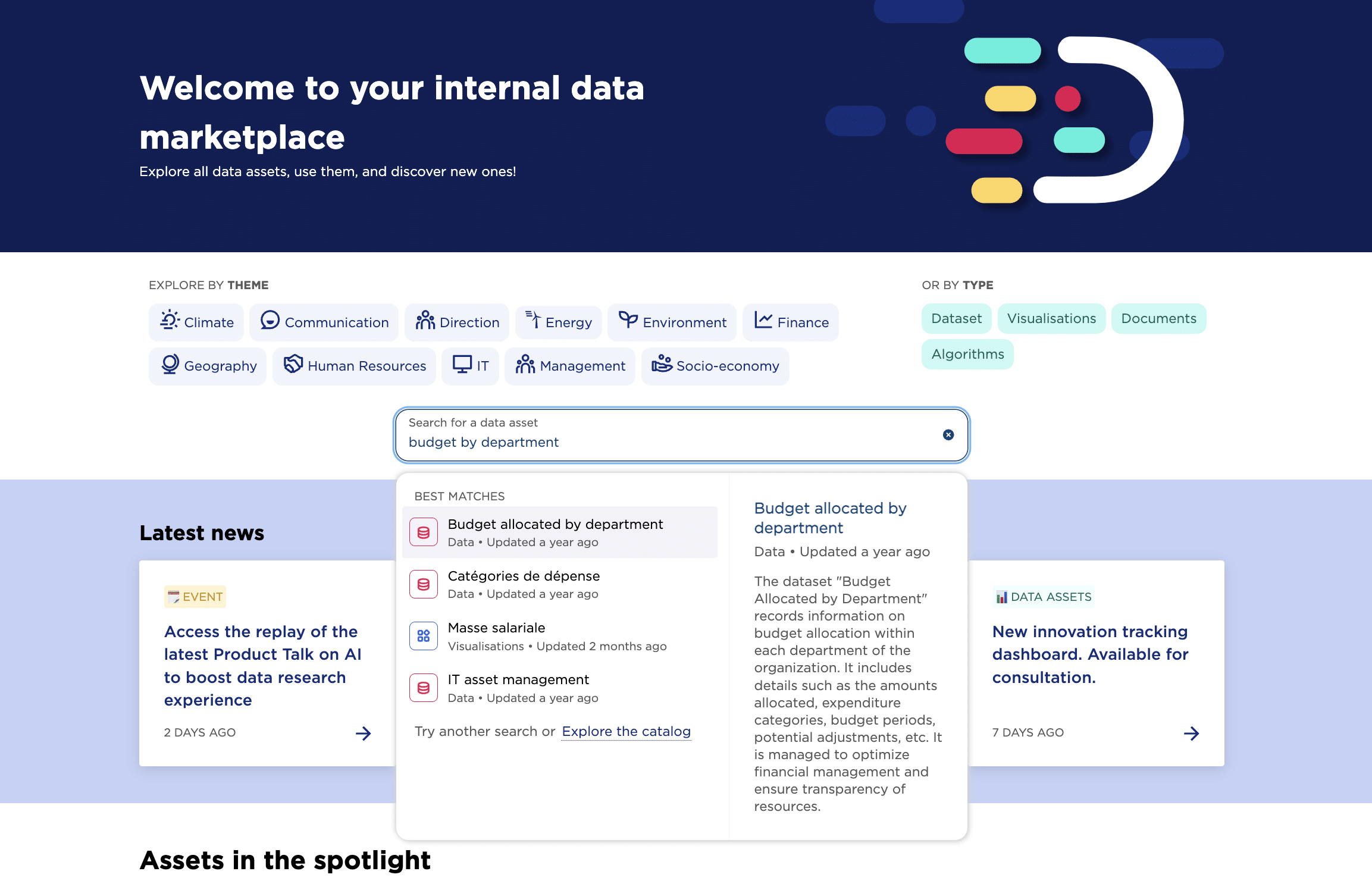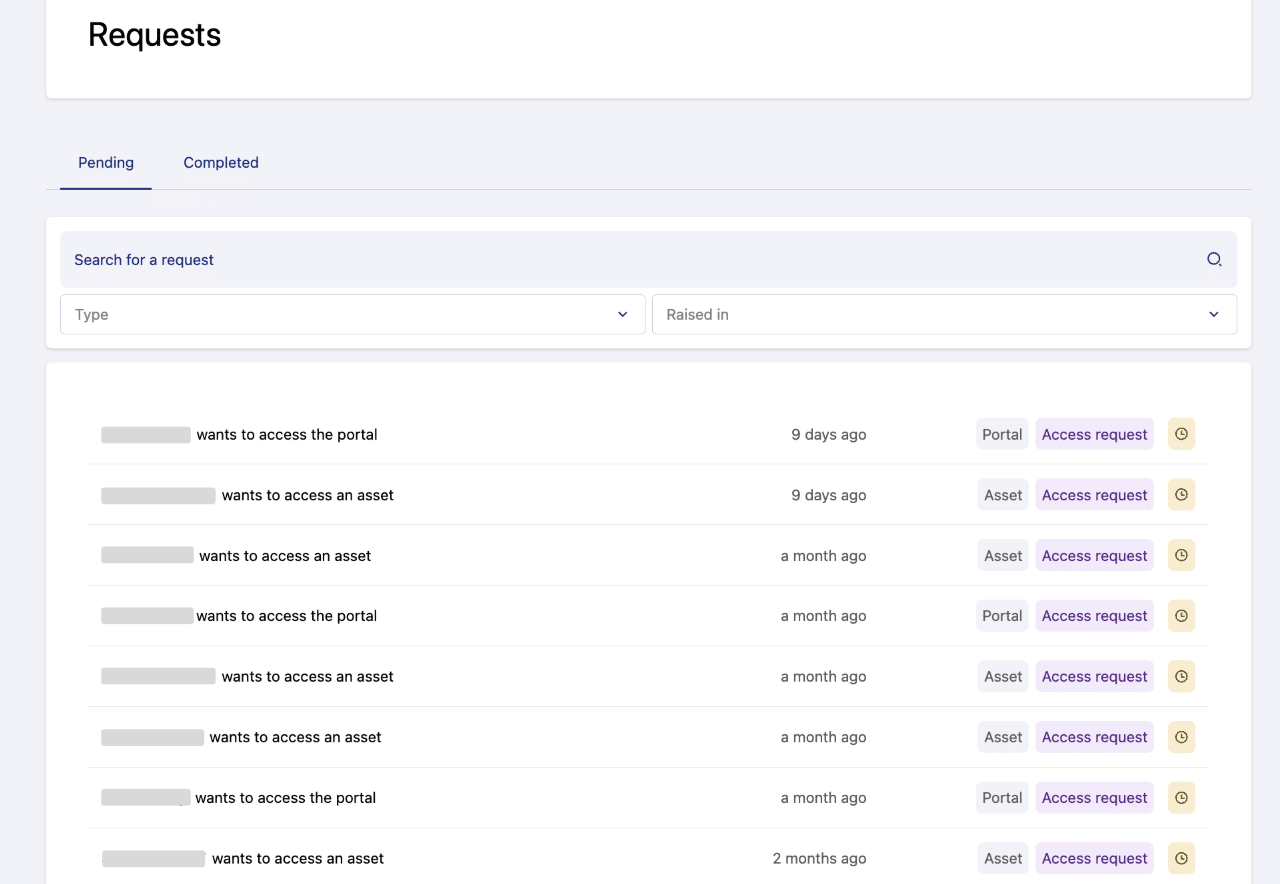3 reasons why data marketplaces are the only solution to turn data into value
How can you maximize the value of data and use it to achieve organizational objectives? That’s the ambitious goal of many data leaders as they plan for 2025. In an increasingly digitalized world, where data volumes are exploding, to generate value data leaders need to enable everyone in the business to easily access the right information in a seamless way. Data marketplaces are essential to this, delivering capabilities that move beyond traditional data catalogs, as this article explains.

Traditionally, the first step in maximizing the value of data was to deploy a data catalog solution to build a comprehensive inventory of the entire data estate. However, while this provides a technical repository of information for data teams, it doesn’t enable the consumption of data at scale by business users. That’s why data marketplaces are growing in popularity, as they address the “last mile” challenge of putting data directly in the hands of the business, transforming its potential into concrete value. Here’s why data marketplaces will allow you to quickly drive value for your organization.
Data marketplaces provide direct access to self-service data beyond metadata
Would you buy a product online without being able to examine it from all angles? The same is true for data. It’s unrealistic to expect business users to consume it without having direct, flexible, and transparent understanding of what it covers. In today’s digital world, users expect fast, seamless, and self-service access to reliable, trustworthy information. Meeting this need is therefore essential for data leaders that want to enable employees to leverage data and generate value.
Before the emergence of data marketplaces, solutions such as data catalogs were designed to meet this challenge. Although valuable for inventorying the organization’s resources, data catalogs are limited to describing data via metadata. That means they provide insight into what data exists, but don’t give non-technical business users direct access to data or the ability to operate flexibly and autonomously.
Data marketplaces go far beyond the capabilities of data catalogs. They provide direct access to data, allowing users to manipulate, explore, filter, visualize, and export it, based on their specific needs. It’s crucial that access is flexible, fast, and intuitive to truly drive value. Self-service and clear documentation reduces the need for data teams to get involved, avoiding repetitive, low-value requests, such as: “Can we export this data in this format?” or “Can we filter this data to get this view?” At the same time self-service minimizes the risk of users deciding not to use a particular data asset as they can’t immediately access it. Through an intuitive interface and self-service everyone can quickly carry out specific tests and filters, completely independently, without the need for technical support.
Data marketplaces provide direct access to data and the tools needed to use it. They free data teams from time-consuming and low-value tasks, while providing users with autonomous access to the information they need, all while complying with organizational governance and data access policies. This makes data marketplaces an effective complement to data catalog solutions and, in some cases, may meet all of an organization’s needs thanks to their integrated cataloging capabilities.
Opendatasoft data marketplace features that allow self-service data consumption
- A wide range of open access export formats: Managing export requests can be time-consuming for data teams, just as waiting for answers is frustrating and unproductive for users. To improve efficiency for all, Opendatasoft allows users to export data from a marketplace themselves, provided that it is accessible without requiring authorization. With built-in data insights, users can quickly understand what data covers, helping them identify relevant data assets and limiting unnecessary exports.

- Generate automatic visualizations: Many users prefer to view data as a visualization, such as a dashboard, map, or chart rather than as a table. To support this and democratize data use, Opendatasoft allows those without technical skills to create visualizations from a dataset by simply interacting with an AI-powered bot. This makes it easier to use data, stimulates user interest, and frees up data teams to focus on more specific, complex requests.

Data marketplaces make investment in data tools, teams and assets profitable
Data within organizations is often scattered across multiple tools and locations, making it complex to manage and difficult to leverage at scale. However, storing data in these different environments, such as data warehouses or data catalogs, is necessary because they provide the best solution for the information’s specific type, characteristics, volume, and target audience.
Wherever data is stored, CDOs need to create a single source of truth that is accessible and adopted across the organization. This will create trust that data is reliable and correct, increasing engagement and usage and maximizing value creation. Given this need, how do CDOs make data accessible, visible, and understandable to business users, without the need for SQL queries or involving data experts? How can organizations create a unified showcase that centralizes data useful to the business, while still enabling it to be managed at a local level within specialized tools by dedicated teams?
Data marketplaces are focused on making it easy to discover and reuse data, creating attractive, intuitive central access to the organization’s data assets. They remove friction from the user journey to ensure the right data can be seamlessly found by the right person, when they need it. They handle the “last mile” of data access, which is crucial to ensuring efficient, widespread consumption that generates value from information.
Data marketplaces make it possible to contextualize and package the data, just like real products displayed in a shop window. However, it is vital to go beyond simply publishing data and hoping it will be found – even the best products in a store risk being overlooked, if they are not correctly displayed and highlighted, wasting resources and reducing value. Data marketplaces therefore provide key features, such as contextual information, metadata and recommendations to ensure that data products are discovered and shared effectively, helping create value at all levels of the organization.
Opendatasoft data marketplace features that maximize ROI on data investments
- Powerful, intuitive search: To maximize data discoverability, the Opendatasoft solution is built on an integrated AI-based semantic search engine. Rather than searching on keywords, it interprets user intent, minimizing the risk of missing relevant data, even in the event of errors in queries, such as spelling mistakes. Coupled with customized filtering capabilities, the search function highlights data assets from across other, less-well indexed solutions, making information more accessible and able to generate greater value.
- Sharing of reference or external data: Organizations often buy external data, but a lack of visibility means there is a strong risk of duplicate purchases, with multiple departments buying the same dataset, adding unnecessarily to costs. The Opendatasoft data marketplace makes it easy to share and find this external data, reducing multiple purchases and allowing organizations to optimize their spending and achieve significant savings.
- Marketplace experience: If people don’t use an organization’s data, it won’t generate value. Ensuring that employees feel confident in consuming data is vital, requiring both an intuitive, appealing experience and self-service browsing. The Opendatasoft solution enables organizations to customize the visual interface to fit with corporate look and feel, delivering a consistent, reassuring experience. It also offers contextualized product sheets that give more details on each data asset, guiding users in their autonomous searches, just as on a real e-commerce marketplace. This self-service approach frees up time for data teams while optimizing the use of data assets. By making the user experience attractive and intuitive, Opendatasoft encourages user engagement, and therefore data consumption, at scale.

Data marketplaces reconnect data and business teams
What is a data marketplace? According to Gartner (in its report Quick Answer: What Do D&A Leaders Need to Know About Data Products?), a data marketplace is a collaboration platform that allows data producers to publish data products, consumers to find, access and self-serve data, while data governance teams are able to approve/audit access, usage and changes to those data products. It is thus becoming a key tool to bring together data and business teams, accelerating data-driven collaboration that increases growth and innovation.
When data remains in the hands of data teams, or when it is difficult to access, it is impossible to know if it fully meets business needs. The key to maximizing the value of data is creating active collaboration between technical experts and business users. A data marketplace underpins this collaboration in multiple ways. For example, business teams can easily request direct access to relevant data and provide feedback on its quality, which helps data experts better understand the data’s real value and optimize it to meet business requirements. This collaboration ensures that the most relevant, useful data is prioritized for sharing, increasing ROI and driving greater data use.
Business teams can also share real-world use cases made from data on the marketplace, highlighting both the work of data teams and inspiring other departments to use that data themselves. For example, a sales person could share a dashboard showing how a product was sold in a new country, and this could be accessed and reused by their colleagues. This collaborative dynamic creates a virtuous circle where each team feeds the other and fosters innovation, creating a community around data.
Additionally, by providing a centralized and accessible platform, a data marketplace streamlines the management of requests for data, saving time and enabling data teams to respond more quickly to higher-value priorities. This creates the ideal conditions for a more data-driven approach, provided that a clear data governance strategy is implemented upstream.
Opendatasoft data marketplace features that strengthen collaboration around data
- Centralized access request management: Often business users have to navigate multiple tools when requesting access to data, adding to the workload of governance teams. To overcome this the Opendatasoft data marketplace centralizes all the data assets useful to the business in a single place. This makes it possible to restrict access to specific data to certain users or departments, while showing that this data exists, and enabling users to submit access requests if they would like to view it. All of these requests are then centralized, providing a comprehensive view of past and pending queries, and optimizing workflows.

- Sharing opinions on data: Shoppers visiting an e-commerce site now expect to be able to leave and read consumer reviews of specific products. Following the same idea, the Opendatasoft solution allows users to easily and transparently share their feedback directly on published data. These comments help data owners to adjust and improve the relevance of the data and how it is described. It also encourages the emergence of an active data community that brings together producers and consumers to exchange ideas, collaborate and build a reliable and dynamic data ecosystem together. This then strengthens trust around data within the organization.
Data marketplaces - bridging the gap between data and value creation
Here are some real-world examples of how data marketplaces increase ROI and growth for organizations:
- Make data catalog implementation impactful and cost-effective: Data catalogs can be time-consuming and expensive to deploy, with their impact not fully seen by the business. Complementing them with a data marketplace transforms the value they bring by providing access for all to the data they have inventoried. Data marketplaces put information directly in the hands of business users who can then use it to create tangible value for the organization.
- Limit duplicate purchases of external data: By streamlining access to third-party data and increasing visibility of what has been bought, data marketplaces can significantly reduce duplication, bringing down costs and optimizing budgets.
- Improve the production of business-relevant data: By connecting data and business teams, data marketplaces provide a space where users can give valuable feedback on data assets, guiding and encouraging data teams to publish more relevant data tailored to their needs.
- Free up time for data teams: By giving business users controlled, self-service access to data, technical teams reduce the need to handle low value tasks, such as data export or the creation of exploratory data visualizations. This frees up time for more complex, business-critical activities.
Data marketplaces are essential solutions for transforming data into an engine for business growth. By providing a centralized, appealing and intuitive showcase of an organization’s entire data estate they drive the wider use of data by business teams. This justifies the time and investment made in structuring, preparing and leveraging data, delivering ROI on the wider data stack and data programs. Thanks to their intuitive interfaces, enriched with personalized recommendations and seamless journeys, they democratize access to data, making it available and actionable across the organization. By increasing the visibility of data and encouraging its use, they meet business challenges while guaranteeing a tangible and measurable return on data investments.



